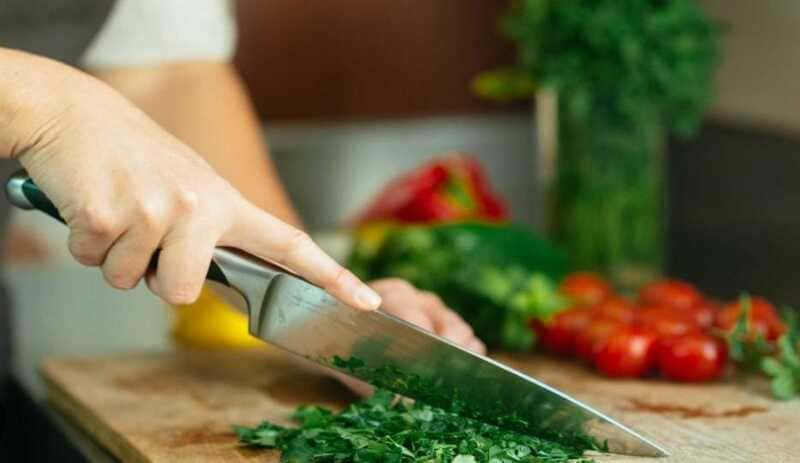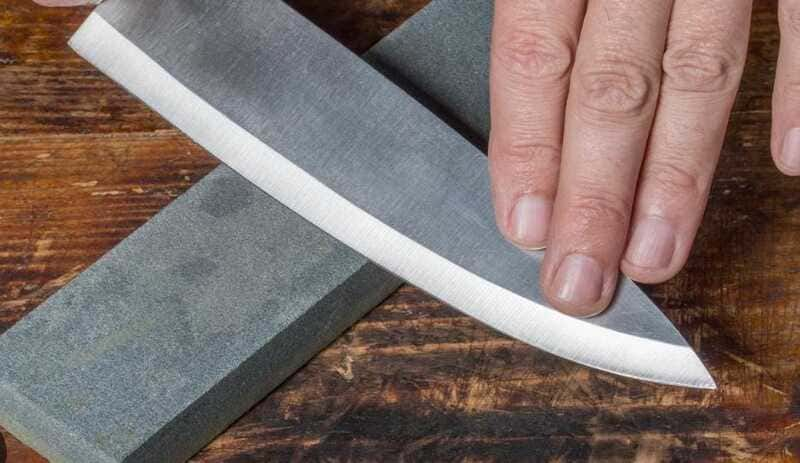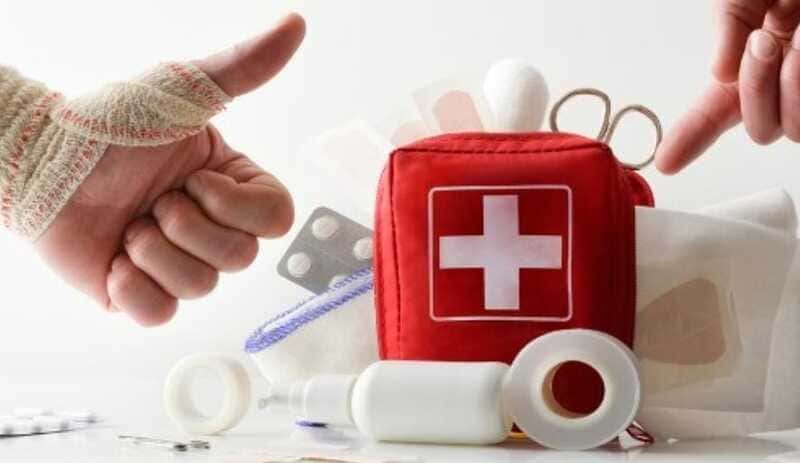The kitchen is one of the most dangerous places in the house, and sharp objects, such as knives and scissors, are a major cause of injury. Deep cuts, severed fingers and hands and serious injuries are just some of the accidents that can occur when these objects are handled without due caution.
However, there are steps that can be taken to reduce the risk of injury when working with sharps in the kitchen. In this article, we will review How to Avoid Sharps Accidents in the Kitchen, as well as some safe cutting techniques and recommendations for the use of safety equipment. We will also explore what to do in case of cuts and how to teach children to handle sharps safely.

Safety in the kitchen is essential to enjoying food preparation safely and securely. Read on for practical tips on how to avoid sharps accidents in the kitchen.
Basic precautions.
Handling sharp objects in the kitchen, such as knives and scissors, can be dangerous if proper precautions are not taken. Therefore, it is important to know how to avoid sharps accidents in the kitchen.
First of all, it is important to use knives and other sharp objects properly. It is advisable to use the right knife for each task and make sure it is sharp to avoid having to apply too much pressure when cutting. It is also important to hold sharp objects by the handle and keep your fingers away from the cutting edge while cutting.

Another important aspect is the cleaning and storage of sharps. After use, sharps should be washed with hot soapy water and then dried thoroughly. It is important not to leave sharps in the sink or dishwasher, as this increases the risk of cutting oneself when looking for them among other utensils. Instead, they should be stored in a safe and organized place, such as in a knife block or in a separate tray in a drawer.
It is also important to note that knives and other sharp objects should be kept out of the reach of children. Sharps should be stored in a safe place and out of sight of children, preferably in a locked drawer or in a high place that children cannot reach.
Safe cutting techniques.
Safe cutting techniques are essential to the process of How to avoid sharps accidents in the kitchen. To avoid injury, it is important to know which knife to use for each type of task and how to handle it properly.
For starters, it is important to use the right knife for each task. For example, a chef’s knife is ideal for cutting and chopping vegetables and meats, while a paring knife is better suited for peeling fruits and vegetables. It is also important to ensure that knives are sharp, as a dull knife may require more pressure and increase the risk of cuts.

In addition, it is important to hold the knife correctly to avoid injury. The handle should be held firmly and the fingers should be placed behind the edge of the blade while cutting. Never cut by holding the sharp object by the blade or use it as a lever tool.
When peeling fruits and vegetables, hold the sharp object firmly and use the paring knife to remove the skin. It is also important to keep your fingers away from the blade and not to press too hard.
First aid for cuts: what to do if a cut occurs and how to treat it properly.
Despite taking precautions of How to avoid sharps accidents in the kitchen and using safe cutting techniques, cuts in the kitchen can happen. It is important to know how to act in the event of a cut to minimize the risk of complications and promote a speedy recovery.
First, it is important to assess the severity of the cut. If it is deep or extensive, seek immediate medical attention. If the cut is minor, it can be treated at home.
To treat a cut at home, wash the wound with mild soap and water to remove any dirt and debris that may be present. If there is bleeding, apply a clean compress and gently press on the wound to stop the bleeding. If necessary, the affected extremity may be elevated above the level of the heart to reduce blood flow.

Once the bleeding has stopped, a clean, dry bandage or gauze may be applied over the wound to keep it clean and protected. The dressing should be changed regularly and the wound monitored for signs of infection, such as redness, swelling or pus.
If the cut is deep, is bleeding profusely, or does not stop bleeding after 10 minutes of compression, seek medical attention immediately.
How to teach children to handle sharps safely.
Teaching children to handle sharps safely is an important skill that can help them become more independent in the kitchen and develop a love of cooking and healthy food. However, it is important to do it safely and responsibly.
The first thing to do when teaching children to use knives and other sharp objects is to establish clear rules. Children should understand that these objects are dangerous and should be used with caution and under supervision. Rules can include such things as not running while carrying a knife, not cutting near other people, and always keeping the knife pointed down when not in use.
It is also important that children understand how to use knives and other sharp objects correctly. This includes how to hold them correctly, how to cut safely and how to position fingers to avoid accidental cuts. In addition, it is important to teach them how to clean and store these objects properly.
It is important to note that supervision is essential when teaching children how to handle sharps. Children should be supervised at all times while using knives or other sharp objects in the kitchen. Supervision can also help detect and correct bad habits before they become a problem.
Conclusions and summary.
In conclusion, working with sharps in the kitchen can be dangerous, but if proper preventive measures are taken and safety techniques are used, unnecessary injuries can be avoided. Some of the key preventive measures to keep in mind include washing and properly storing sharps, using appropriate knives for each task, wearing personal protective equipment such as oven mitts, and supervising children at all times while using sharps.
In addition, it is important to follow safe cutting techniques, such as keeping fingers out of the knife’s path and cutting on a stable surface. If a cut occurs, it is important to treat it properly and seek medical attention if necessary.
Finally, teaching children to handle sharp objects safely is an important skill that can help them become more independent in the kitchen. It is important to establish clear rules, teach them how to use sharps properly and supervise them at all times while using them.

